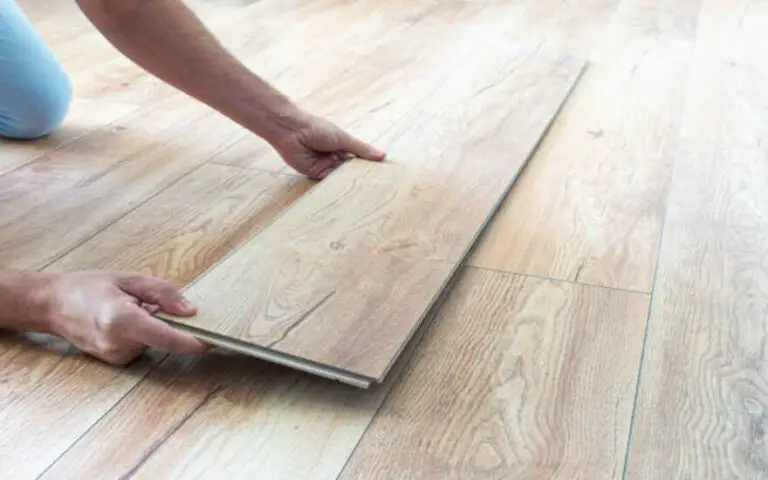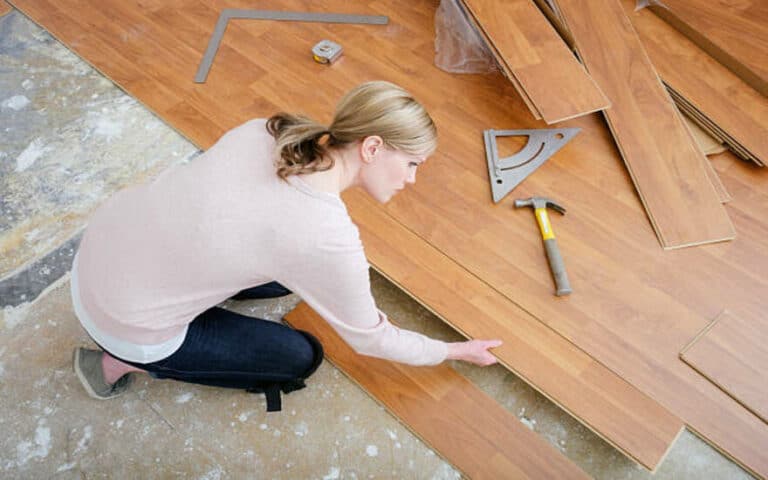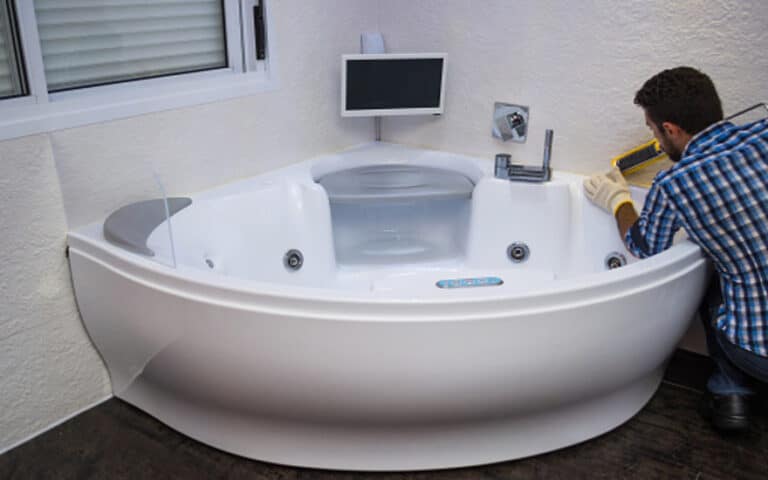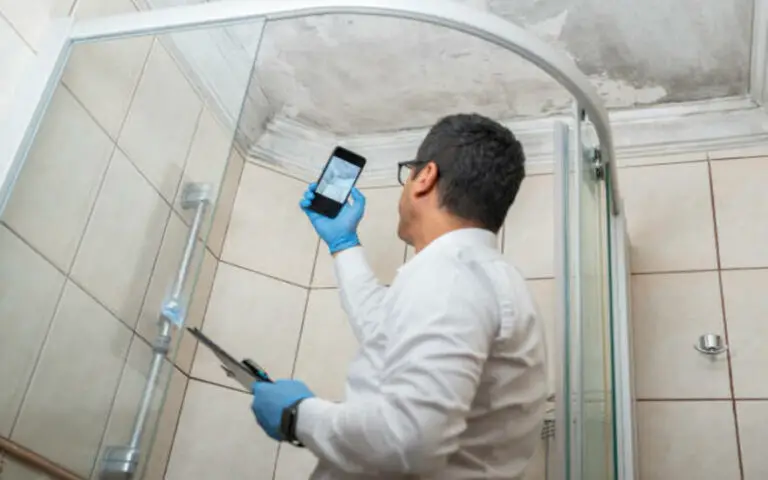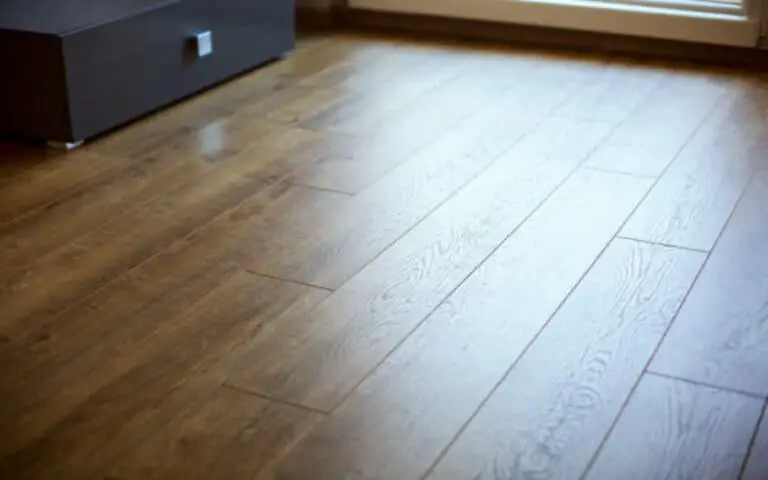In this article, we will discuss the most effective techniques for cleaning vinyl bathroom flooring so that it maintains its pristine appearance. Continue reading if you want to find out more!
How to clean vinyl bathroom flooring: 11 Steps You Need to Know
Cleaning vinyl bathroom flooring is easier than it sounds. To keep your vinyl bathroom floor looking its best, follow these 11 tricks:

1. Choose the Right Cleaning Supplies
After you have gathered the right cleaning supplies, it’s time to start tackling the dirt and grime. To avoid damaging your vinyl flooring:
Use the mildest possible way.
- It should be swept or vacuumed every evening, and any spills should be wiped up immediately.
- Make your cleaner by mixing one cup of vinegar in one gallon of hot water and adding two or three drops of dish soap for extra cleaning power.
A microfiber mop is ideal for cleaning vinyl floors, as it has a gentle touch that won’t scratch the surface.
2. Use a Gentle Approach
A gentle approach is a next step to keep in mind when cleaning your vinyl bathroom flooring. It’s best to avoid using harsh chemicals and abrasive tools, as these can damage the vinyl tiles. Instead, try using a white cloth or towel with warm water to clean the surface.
You can also make up a natural and mild cleaning solution with white vinegar and water that you can use to mop your floor. Put a few drops of liquid dishwashing detergent into your mixture if you want to give it a little additional oomph when it comes to the cleaning department. When mopping, make sure you change the water frequently and rinse the mop when necessary.
3. Dust and Vacuum First
After you’ve chosen the right cleaning supplies and decided to take a gentle approach, it’s time to start cleaning your vinyl bathroom floor. The first step is to dust and vacuum the surface to remove any surface dirt and debris.
This will ensure that the cleaning process is more effective, as any dirt or grit left behind has the potential to cause scratches on the vinyl surface. You can also use a broom or dust mop for this step. Once you’ve finished dusting and vacuuming, it’s time to move on to the next step.
4. Clean with Baking Soda
For tougher cleaning jobs, baking soda is a great option. To clean the floor, combine a quarter cup of baking soda with a pail of warm water, and then scrub the floor with a towel or a mop. Baking soda is a safe cleaning agent that may be used on vinyl flooring without causing any harm to the surface.
If you want the combination to have a stronger cleaning effect, add a few drops of dishwashing liquid detergent. After you have scrubbed the floor, it is imperative that you thoroughly rinse it with clean water to eliminate any residue.
5. Use a Microfiber Mop
Once you’ve removed all the dirt and debris from your vinyl floors, it’s time to mop. Because it won’t harm the surface of the vinyl and can quickly take up dirt, dust, and debris, a mop made of microfiber is an excellent choice for cleaning vinyl floors.
When using a microfiber mop, use a mild cleaning solution. Mix one gallon of hot water with one cup of white vinegar and add two or three drops of dish soap if desired. Mop the floor in a circular motion, rinsing the mop frequently with clean, hot water.
If you want the water and vinegar combination to be even more effective at cleaning, add a few drops of dishwashing liquid detergent. Once you’ve finished mopping, allow the floor to air dry completely before walking on it to avoid leaving streaks.
6. Prevent Soap Build-up
Another trick to remember when cleaning your vinyl bathroom flooring is to prevent soap buildup. Soap can easily accumulate on your floor and create a slippery surface that could be dangerous. To avoid this, ensure you rinse your mop and buckets after each use and use a mild soap or detergent that won’t leave a residue.
Additionally, wipe away any excess soap with a damp cloth after mopping. Following these tips can ensure that your vinyl bathroom floor remains safe and clean for everyone in your home.
7. Tackle Tough Stains
Tackling tough stains is a must-do when cleaning vinyl bathroom flooring. Baking soda and water may be used to create a cleaning solution that is effective for removing even the most stubborn stains. Start by sprinkling the baking soda directly onto the stain, then use a damp cloth or sponge to scrub the area gently.
You can even let the baking soda sit for 15-20 minutes before scrubbing for maximum cleaning power. You can also use mild dish soap and warm water to help remove any stubborn stains. After removing the stain, give the area a last rinsing in clean water and then pat it dry with a fresh towel or cloth.
8. Dry Immediately
Once you’ve completed the wet cleaning, it’s important to dry the floor immediately. If you have a squeegee, use it to remove excess moisture. If not, use a dry cloth or towel to mop up the remaining water.
Because of this, the vinyl will be protected from harm and retain its attractive appearance for an extended period. Opening a window or turning on a fan is also good to expedite drying. Doing so will ensure your vinyl flooring remains in great condition for many years.
9. Maintain Regular Cleanings
It’s important to maintain regular cleanings of your vinyl bathroom flooring to keep it looking its best. It should be swept or vacuumed every evening, and any spills should be wiped immediately. Vinyl tiles are very simple to clean; all you need to do is sweep or vacuum them to eliminate dust and debris.
When you mop, use a solution of equal parts vinegar and water. Begin using a damp white cloth or towel to clean the surface with warm water. Make up a natural and gentle cleaning solution for your vinyl flooring. White vinegar is perfect for cleaning vinyl flooring when mixed with water in a ratio of 1:2. The best way to clean vinyl bathrooms is to mop them daily.
If you cannot do it daily, go over it with a microfiber mop and warm water. Wet-clean the floor using a damp mop and a vinyl-safe floor cleaner once you’ve eliminated any dry dirt and debris.
10. Apply a Protective Coating
Once you’ve finished cleaning your vinyl bathroom flooring, you can apply a protective coating to keep it looking shiny and new for longer. Several vinyl-safe sealants are available online or at your local hardware store.
Just read the instructions on the label carefully and follow them closely, as each product has its unique application process. After applying the sealant, your floor will be more resistant to dirt and spills, making it easier to keep clean.
11. Replace Damaged Tiles
If you notice any damaged tiles, it’s important to replace them right away. Damaged tiles can be unsightly and lead to further damage to the flooring. To replace a tile, you’ll need to pry up the existing tile with a putty knife and remove the adhesive with a scraper.
Once the adhesive is removed, install the new tile and press it firmly. Be sure to wipe away any excess adhesive or grout, so it doesn’t stick to the surrounding tiles. With these tips, you can easily keep your vinyl bathroom flooring looking great for years to come!
How to clean Pvc flooring?
When cleaning PVC flooring, a mild soap and water solution is one of the best products. Use a damp mop to apply the soap mixture, rinsing the mop frequently with clean, hot water from another bucket or sink.
If you want the water and vinegar combination to be even more effective at cleaning, add a few drops of dishwashing liquid detergent. Mop the floor twice, with soap and water and vinegar and water. Make sure to dry immediately after mopping, as leaving any moisture on the surface can cause damage.
Is Pine Sol good for vinyl floors?
It’s important to choose the right cleaning supplies when it comes to vinyl flooring. While Pine Sol is a great cleaner for many surfaces, vinyl flooring is not recommended. Pine Sol is too acidic and can cause discoloration or damage to the vinyl flooring.
Instead, look for cleaning products that are specifically designed for use on vinyl floors. These products are designed to clean without causing any damage to the flooring.
Summary
In summary, vinyl floors are a great addition to any bathroom, and with proper care and maintenance, they can last for years. Keeping your vinyl flooring clean and free of dirt, dust, and grime is essential to keep it looking great and prevent damage. Start by selecting the right cleaning supplies and using a gentle approach when cleaning. Be sure to dust and vacuum the surface first to remove any dry dirt and debris. With these tips, you can keep your vinyl bathroom flooring looking clean and beautiful all the time.

